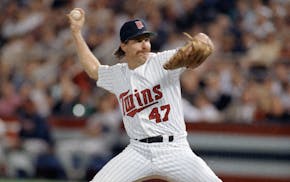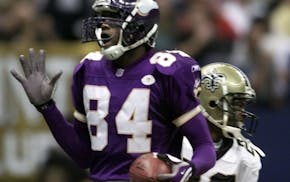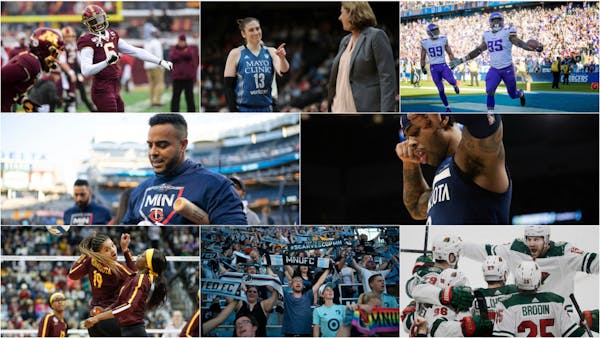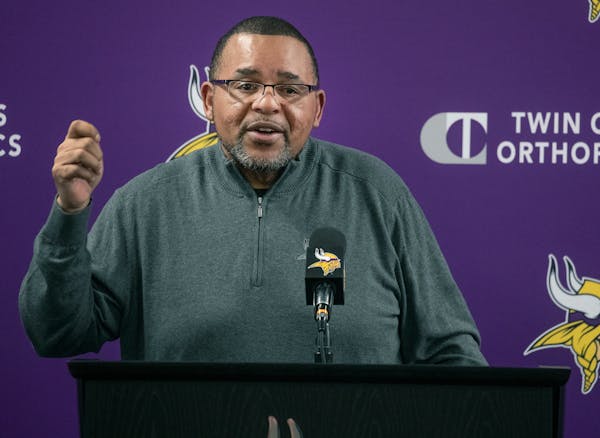It's hard to think of any season in recent memory when the Vikings brought in such a small free-agent class as they did this offseason.
The Vikings are in a tight salary cap situation, and that played a big part in them signing only three outside free agents. The additions were defensive tackle Michael Pierce from Baltimore (three years, $27 million), defensive end Anthony Zettel from San Francisco (one year, $1 million) and wide receiver Tajae Sharpe from Tennessee (one year, $1 million).
Besides those three, the team added another $14.1 million in contracts to retain its own free agents this offseason, including $10 million over three seasons for kicker Dan Bailey.
How does that compare to previous campaigns?
According to the website Spotrac, the Vikings spent over $103 million on free agents in 2019 and 2018; $111 million in 2017; $51 million in 2016; $13.7 million in 2015; $55 million in 2014; $92 million in 2013; and $44 million in 2012.
Looking back to last year, the club was in a similar spot when it came to the salary cap, but the Vikings still managed to bring in such players as Josh Kline, Shamar Stephen, Dakota Dozier, Sean Mannion and Britton Colquitt on free-agent deals from other clubs.
On top of that they were able to retain Anthony Barr on a huge five-year, $67.5 million deal after it appeared the linebacker would sign with the Jets.
This year they didn't have similar luck keeping their own players as Trae Waynes, Linval Joseph, Stephen Weatherly, Mackensie Alexander, Xavier Rhodes, Andrew Sendejo and Jayron Kearse all signed deals elsewhere and Stefon Diggs was traded to Buffalo.
What that means is that the team is going to need to get even better production from the rookie class than it did last season, when such players as Garrett Bradbury, Bisi Johnson, Alexander Mattison, Irv Smith Jr. and Kris Boyd all played meaningful snaps.
Help incoming?
The Vikings are clearly going to lean on some young players after landing 15 players in the draft, a seven-round NFL record. General Manager Rick Spielman made a smart move in landing two first-round picks: Louisiana State wide receiver Justin Jefferson and Texas Christian cornerback Jeff Gladney, "two quality players in the first round that are going to have to make an impact for us this year," Spielman said.
But the team will need production from others, too.
Tackle Ezra Cleveland, taken in the second round, could easily get a chance to start. With so many cornerbacks needed, third-rounder Cameron Dantzler and fifth-rounder Harrison Hand could definitely see playing time in nickel and dime corner packages. Quarterback Nate Stanley, taken late in the seventh round, will have a real shot to make the roster behind starter Kirk Cousins and Mannion.
"We were very excited about how the board fell to us, especially in the first round," Spielman said. "After we completed the Stefon Diggs trade with Buffalo, we knew we had to try to replace or at least get a strong candidate to replace Stefon Diggs. And then also fill in the corner position in the first round with Jeff Gladney, because we lost all three of our corners."
But the $100 million question is whether these players are going to get the same kind of preparation since they have not had the traditional rookie minicamps and offseason workouts because of the coronavirus pandemic.
Spielman said he thinks the coaching staff will have the group ready.
"Not only have they been able to install the playbook but they're able to learn off the cut-ups and the films that the coaches worked on all offseason to teach," Spielman said. "So we haven't lost any aspect there as far as the learning part of it.
"It's always great when you can interact in a room together, but unfortunately that's not the situation we're in. But I think Coach [Mike] Zimmer and the staff feel very strongly that they're getting everything that they need to get done from a classroom-learning standpoint."
Garmaker's legacy
Hearing the news that former Gophers and Minneapolis Lakers great Dick Garmaker had died reminded me of how he went from being unrecruited out of Hibbing High School to one of the first great jump shooters in college basketball.
Garmaker was on the Hibbing team that won the consolation title at the 1949 state tournament, but he really blossomed as a player at Hibbing Junior College.
As a sophomore, in the 1951-52 season, he averaged more than 30 points per game and led Hibbing to a runner-up finish at the National JUCO tournament in Hutchinson, Kan. In the four games at the national tournament, he scored 128 points. After the tournament he was named to the JC All-America team.
Following the tournament, he was recruited by at least 10 schools, but he picked the Gophers. As a transfer, he had to sit out a season under the rules of the day.
In his two seasons with the Gophers, he led them in scoring in each season. He averaged 21.6 points per game as a junior on a 1953-54 team that included future NBA players Chuck Mencel and Ed Kalafat. As a senior, Garmaker averaged 24.2 points per game and was named an All-America along with Bill Russell, Sihugo Green, Tom Gola and Dick Ricketts.
The Lakers made Garmaker a territorial draft pick in 1955. He spent six seasons in the NBA, playing 4½ with the Lakers and parts of two seasons with the Knicks.
When the Lakers drafted Garmaker it was the same day that Jim Pollard told coach John Kundla he was leaving the NBA to coach college ball at La Salle.
Kundla was devastated by the news but knew it might happen. "He couldn't help but take it. It was a tremendous opportunity for him," Kundla told the Star Tribune about Pollard leaving. "We're going to miss him. He might have had one more year left. He's given us eight great years and I know he'll do all right as a coach."
Garmaker was a big part of trying to rebuild the Lakers on the fly, and the team would reach the 1958-59 NBA Finals with a roster featuring Garmaker, Elgin Baylor, Vern Mikkelsen, Larry Foust and Hot Rod Hundley. But they were swept out by the Boston Celtics, who featured Russell, Tom Heinsohn, Frank Ramsey, Bill Sharman, Bob Cousy and Sam Jones.
That was Russell's third NBA season, and he averaged 29.5 rebounds per game in the finals. He was unstoppable.
Garmaker was traded in 1959 and he retired in 1961 to go into business. He made four NBA All-Star teams.
Sid Hartman can be heard on WCCO AM-830 at 8:40 a.m. Monday and Friday and 2 p.m. Friday. • shartman@startribune.com

Sid Instant Replay from 1977: Vikings' Super Bowl loss to Raiders hurt the most

Read Sid's column from 1974, when Ara Parseghian left Notre Dame

Sid instant replay: No greater hero than Twins' Morris in World Series



